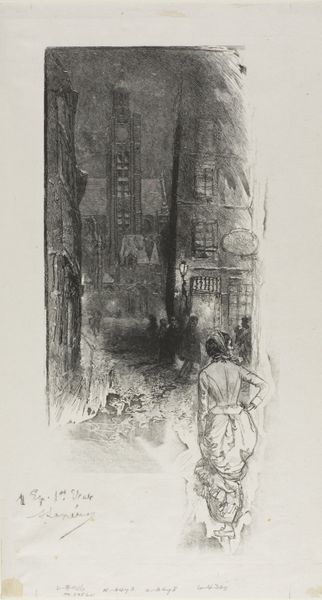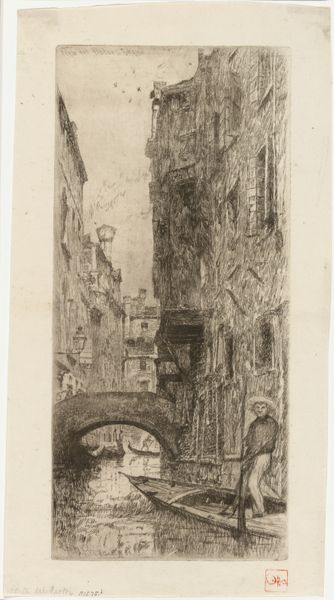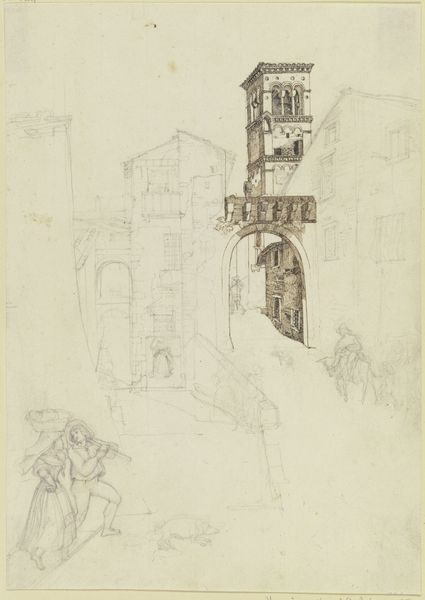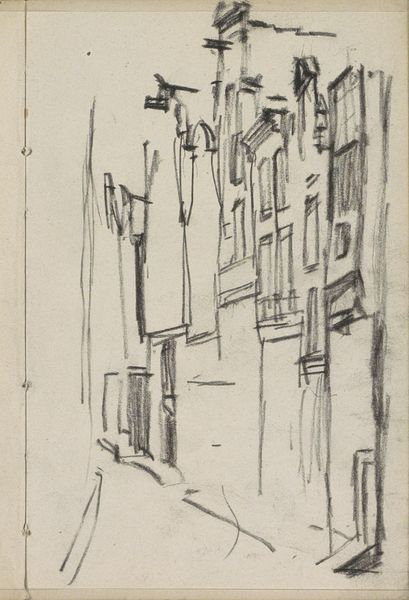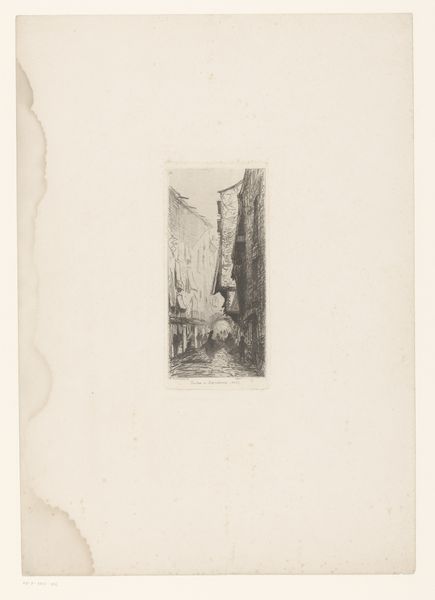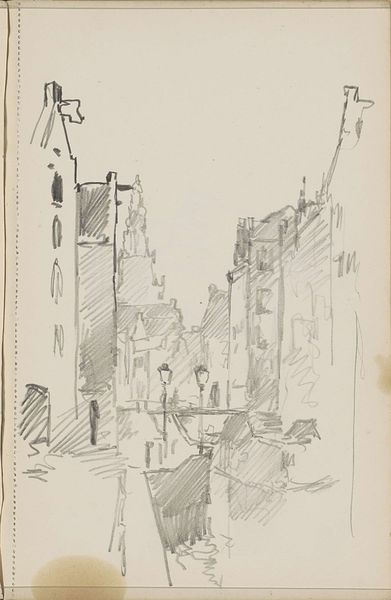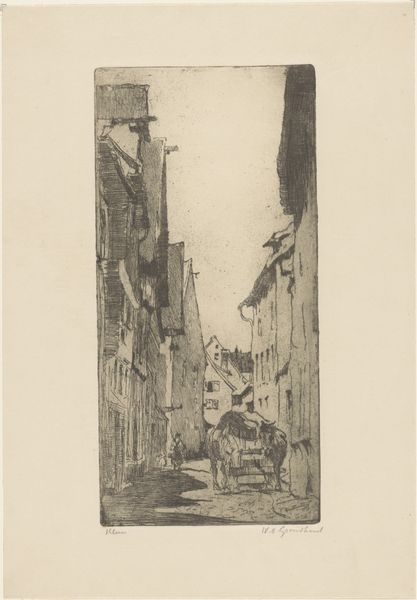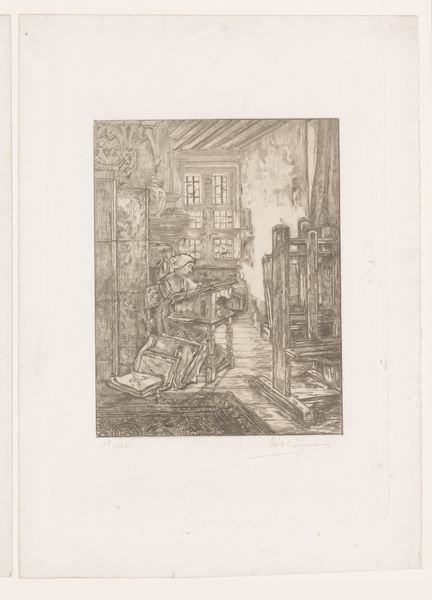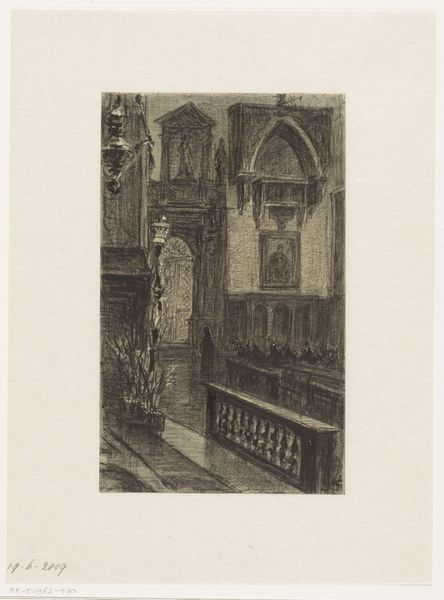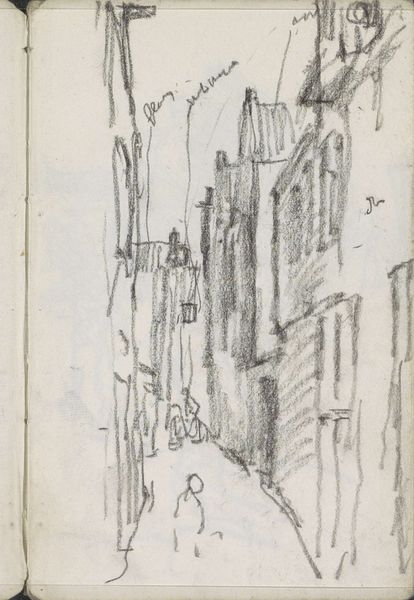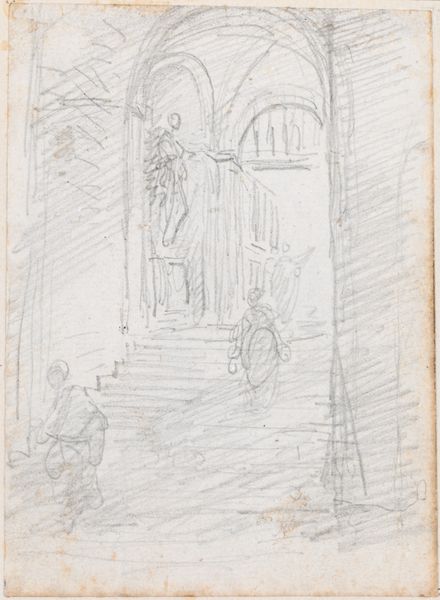
drawing, print, paper, engraving
#
drawing
# print
#
impressionism
#
landscape
#
paper
#
cityscape
#
engraving
Dimensions: 313 × 145 mm (image); 367 × 203 mm (sheet)
Copyright: Public Domain
Curator: This print, "Paris: la Rue de la Montagne-Ste-Geneviève," created by Auguste-Louis Lepère around 1886, captures a Parisian street scene with incredible atmospheric depth. Editor: It’s so evocative, isn't it? There's a palpable sense of being in a hushed, almost clandestine corner of the city. The way the figure is placed in the foreground, facing the buildings, she is about to explore her agency into it all. Curator: Indeed. Lepère, who dedicated much of his career to portraying Parisian life and landscapes, here employs engraving on paper to create a stunning impressionist vision. We see the social fabric interwoven into the urban environment, very much on display here. Editor: And the street itself, winding uphill, leads the eye and implies upward mobility of these characters, which speaks to a number of readings. Gendered roles seem defined, but I wonder how they were being interrogated and shifted within the specific urban and class dynamics Lepère’s imagery encapsulates. How did societal structures impose limitations, and were individuals finding spaces for resistance or self-expression within this context? Curator: It's certainly suggestive of those constraints. What's especially compelling is Lepère’s interest in the less monumental aspects of Parisian life; this isn't the Paris of grand boulevards and celebrated monuments, but a quieter, more everyday experience of the city. Editor: I find that very powerful. By focusing on a seemingly ordinary street, Lepère challenges us to reconsider our assumptions about what is worth documenting. He asks us, whose experiences are valued and whose are relegated to the margins? These visuals highlight the role of marginalized persons in creating social power and agency that can shift and resist power imbalances, opening up paths to justice. Curator: Exactly! I agree wholeheartedly. Lepère provides, through his beautiful craftsmanship, an invaluable glimpse into a very specific moment in the social and visual history of Paris. Editor: Absolutely, and engaging with Lepère’s artwork allows us to confront the persistent systemic challenges present today, even while appreciating a seemingly tranquil historical scene.
Comments
No comments
Be the first to comment and join the conversation on the ultimate creative platform.

